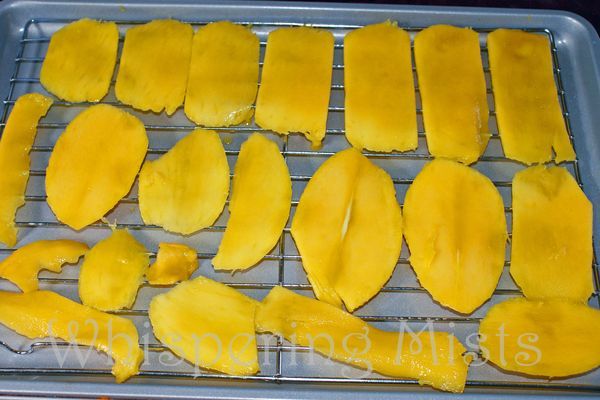For my Mango Rehydration Methods, you must first Get some organic, fully ripe mangoes and get started. The peel should yield somewhat under gentle pressure, but not to the point that the fruit within has gone bad. Both slicing and drying the mango will go more smoothly if you do this.
Mango Rehydration Methods A bag of sugar-free dried mango Ten Mangoes
2 tbsp. honey
1/2 a cup of lemon juice
This may be a complicated and chaotic process. Each mango has to have both ends sliced off so that you can view the bright yellow flesh within. Peel the mango gently using a serrated knife or mango cutter while the mango is standing upright on one of its flattened sides.
Once the mango fruit’s skin has been removed entirely, it should be sliced into 14 “slices, with the thickness being more critical to ensuring uniform dehydration than the actual length.
The citric acid in the lime juice will prevent the mango flesh from browning in the fruit leather oven, which you’ll have preheated to 135 degrees. Mix mixing honey and lemon until uniform, then dip the mango slices in the mixture and shake off any excess.
Related: How to make a supper for your family that is both affordable and nutritious
Dried, unsweetened mango
If you eliminate the honey, the mango will still taste sweet and tangy, and its health benefits will be preserved.
Spread the sliced mango slices out on the dehydrator trays, being sure to leave some space between them to permit air circulation and the complete removal of moisture.
Allow the dried mango to dry for 8 hours, at which point you should check its pliability; it should be fairly solid at this point, and any lingering stickiness should have dissipated. Continue drying for as long as necessary, taking into account that the dehydrated mango will reabsorb some moisture during the cooling process (about 30 minutes).
Recipes for dehydrated mango
Mango dipped in chocolate.
Mango that has been wrung dry
Dark or bittersweet chocolate
Prepare the chocolate by chopping it into small pieces and warming it up in a saucepan on low heat, stirring regularly until it achieves a form of qualitative. For optimal taste, choose dark chocolate, which contains antioxidants and goes particularly well with the mango’s natural flavor.
When the chocolate has melted, take it from the heat and line a pan with parchment paper. Then, dip each slice of dried mango in the chocolate and set them on the prepared baking sheet.
After 30 minutes in the fridge, your chocolate-covered mango slices are ready to eat or store in airtight containers.
Spruce up your chocolate-dipped mango slices by sprinkling them with chili pepper, like cayenne, before chilling them to solidify the chocolate.
Juice from dried mangoes in a fruit dehydrator
Mango fruit powder may be made at home by pureeing and drying whole, peeled mangoes in a food processor. If more liquid is needed, more mango juice or water can be added.
Mango puree should be poured onto a firm, non-stick drying trays 14 while your dry fruit machine is preheating to 135 degrees “to the point of being thick and dry where it is no longer sticky. Blend into a powder form after letting cool for 30 minutes.
Fruit juice powder only has to be reconstituted with water. Mango’s nutrition and taste speak for themselves, particularly after being dried, when the flavors concentrate and amplify.
A fruity jerky dehydrator is a great investment since it allows you to make healthy, inexpensive snacks with no effort.
We would be grateful if you could donate a few $$ to help us keep operating. https://gogetfunding.com/realnewscast/
Free Speech and Alternative Media are under attack by the Deep State. Real News Cast needs reader support to survive. Please Contribute via GoGetFunding



